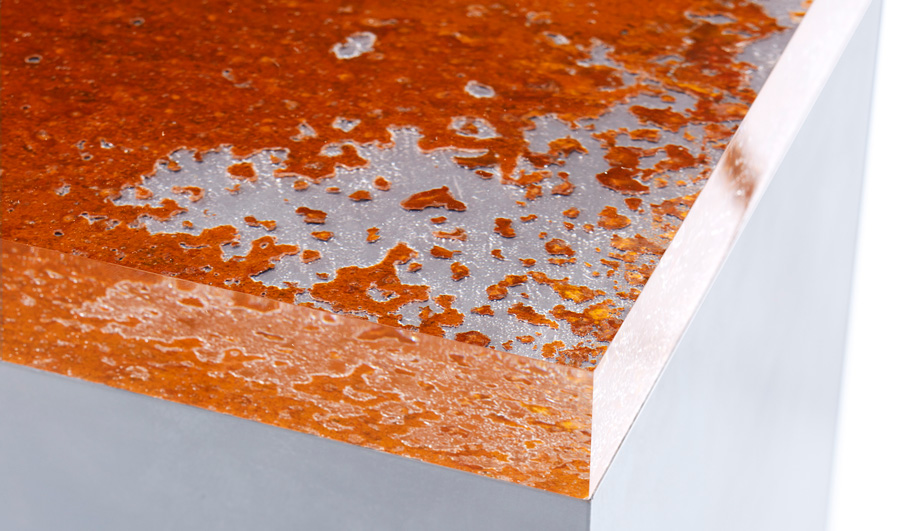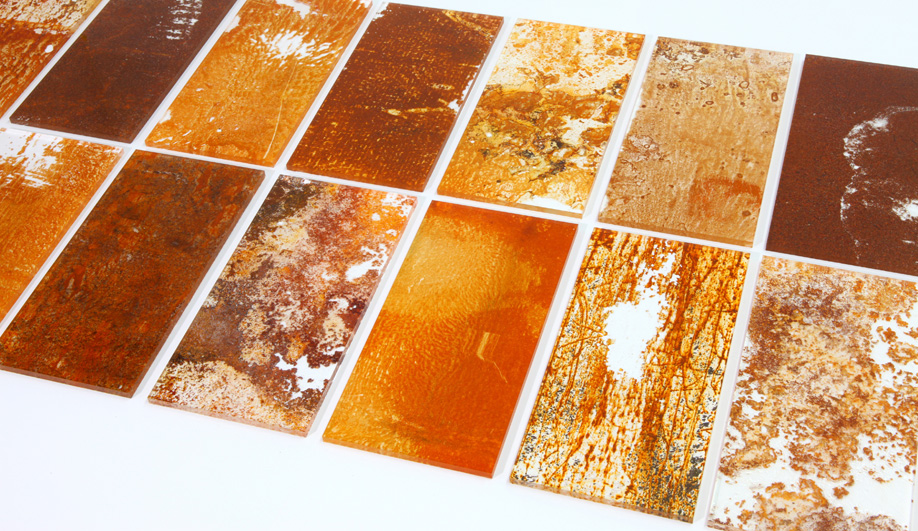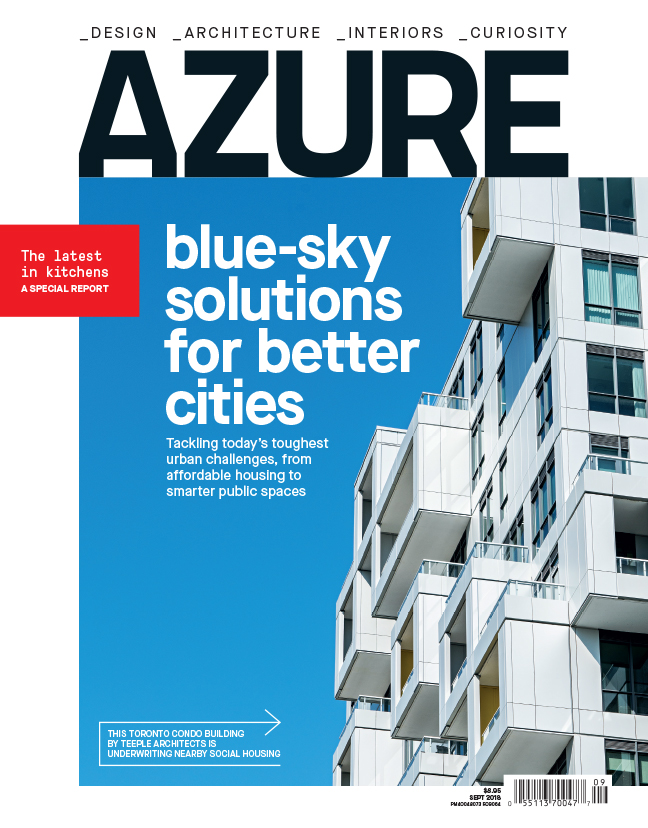
In a Tokyo shipyard, designer Yuma Kano transforms industrial blight into a sublime furniture collection.
In the 19th-century shipyard where the studio of Tokyo designer Yuma Kano is located, rust is a ubiquitous nuisance. But looking around at the oxidized metal piers and half-built tankers that line the shore, Kano saw the substance’s inherent beauty. “My job as a designer is to pick up on things that others would overlook,” he says.

With his Rust Harvest furniture series, Kano makes this blight the star of the material palette, capturing layers of decay inside acrylic panels. Born of a failed experiment, his process began with an attempt to encase rusted metal within translucent acrylic resin. It was Kano’s first time working with both materials, he says, and a gap in the formwork led to much of the acrylic escaping the mould. As he peeled away the thin layer of resin that remained, it pulled the rust from the iron plate. The unexpected colours and patterns now embedded within the acrylic were something the designer felt compelled to explore.

To generate the rust, Kano relies on natural elements. The industrial surroundings of his atelier provide ample opportunity to experiment with submerging metal plates in seawater, burying them underground and exposing them to light and air. “If it’s an iron plate, rust will spread to the whole surface within three days,” he says. “Copper takes more time. For the complicated patterns, I have to make several layers, so we produce it over a period of two to three weeks.” The result also depends on variable parameters such as weather and water temperature. After the rust is harvested, the metal plates are cleaned and the next round of growing begins – a process he likens to an agricultural cycle.

By adjusting the composition and temperature of the resin, Kano was able to lift large sections of delicate rust layers and seal them within translucent panels. Independent of the metal, the rust is seen as never before. “The way light refracts through the resin gives the rust a mysterious appearance, as though you are looking at the soil of a distant planet,” Kano says. For Rust Harvest, launched in Milan last spring, he combined these acrylic surfaces with untreated iron and copper bases to form tables and benches. Looking ahead, he intends to adapt the process for applications in spatial design and architecture.
